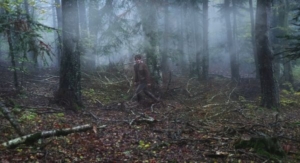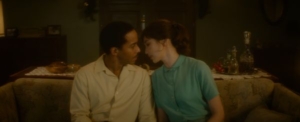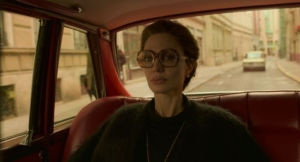

The elegant directorial debut of British-American actress Rebecca Hall (Vicky Christina Barcelona) revolves around two light-skinned Black women following different paths, in a solid adaptation of Nella Larsen’s 1929 novel of the same name. Clare (Ruth Negga, Loving) pretends to be White, while Irene (Tessa Thompson, Dear White People) only occasionally tries to “pass,” to adopt the identity of the dominant racial culture to garner its advantages.
Larsen, who was of mixed race, had a brief writing career that yielded two gripping novels and a handful of short stories. Despite her limited output, her significance puts her in the company of other key writers of the Harlem Renaissance, such as Langston Hughes and Zora Neale Hurston. Hall felt a personal resonance with Larsen’s book, as her maternal grandfather, who was Black, passed for White for much of his life.
Childhood friends Irene and Clare, after years apart, encounter each other while enjoying refreshments at a chic hotel. Clare, now blonde, has become disconnected from everyone she knew from her previous life, while Irene has a secure place within the Black community. Each is fascinated by the other, and Irene awakens in Clare a longing to be among her own people.
Irene meets Clare’s rich husband, John (Alexander Skarsgård), who, believing both women are White, makes transparently racist comments in their presence. It’s not that he doesn’t like Blacks he says, he hates them. Vile remarks establish his disdain, with no opposition by Clare. This sets in motion a suspenseful aspect of the film: if and when John will realize his wife is Black and what her reaction will be.
Irene resides in a grand Harlem brownstone with her doctor husband, Brian (André Holland, Moonlight), and two young sons. She does charity work for the Negro Welfare League, maintaining an upstanding life in contrast to her opportunistic friend. Meanwhile, Clare insinuates herself into Irene’s family through unexpected phone calls and visits and by cadging invitations. She charms everyone, even Irene despite herself, with her beauty, fearlessness, and a laugh like a ringing bell.
At a NWL dance, downtown patrons join the locals. This includes Hugh (Bill Camp), a well-known author and Irene’s friend, with whom she discusses race relations, such as the White folks (like him) who come to Harlem for entertainment, a fact that gives cover to Clare at that event. Perception and reality are not the same, Irene intimates, after apprising him that Clare is not White.
Later, Irene suppresses her feelings, surprised that Brian has invited Clare to a party that she jealously hid from her—having glimpsed a moment when her friend appeared to be flirting with her husband. She remains composed and agrees with Brian: “Clare does add to any party. She’s so easy on the eyes.”
Crisply shot in gleaming black-and-white by cinematographer Eduard Grau (A Single Man), the film uses the 4:3 (boxy) aspect ratio of old Hollywood films that enhances the close-ups of faces, which are the driving force of the narrative, all sideways glances and barely concealed yearnings. By removing color from the photography, skin pigmentation is left to the audience’s interpretation, echoing the theme of the film. (Larsen’s writing often focused on skin shades, poetically. In her first novel, Quicksand, the protagonist marvels at the complexations in a Harlem crowd, observing, “sooty black, shiny black, taupe, mahogany, bronze, copper, gold….” That film should be in color.)
Enriching the ambiance, the costume designs by Marci Rodgers (BlacKkKlansman) evoke the flapper era, with lace blouses and fluttery dresses accessorized by cloches on the ladies and period suits and neckwear for the gentlemen.
Hall’s superb adaptation sharpens the narrative for the screen by eliminating the upbringing of the women and reordering some incidents for clarity. Also perfectly capturing the elusive tone of the book are the tinkling piano keys repeated throughout, from the aptly named “Homeless Wanderer,” by Ethiopian musician Emahoy Tsegué-Maryam Guèbrou, sourced by Hall early in the development process. According to Hall, the tune becomes deliberately repetitive, as if to echo how Irene’s thoughts become caught in a loop as Clare becomes more involved with Irene and her family.
Negga is superb in her role as a tenacious self-preservationist, but it’s Thompson’s moving performance that stands out in all of the first-rate portrayals from the cast. Her delicate gestures and subtle expressions convey a turbulent inner life grappling with her own choices and her claim to authenticity. “We’re all of us passing for something or other, aren’t we?” she asks, rhetorically.
Passing will begin streaming on Netflix October 27.
















Leave A Comment